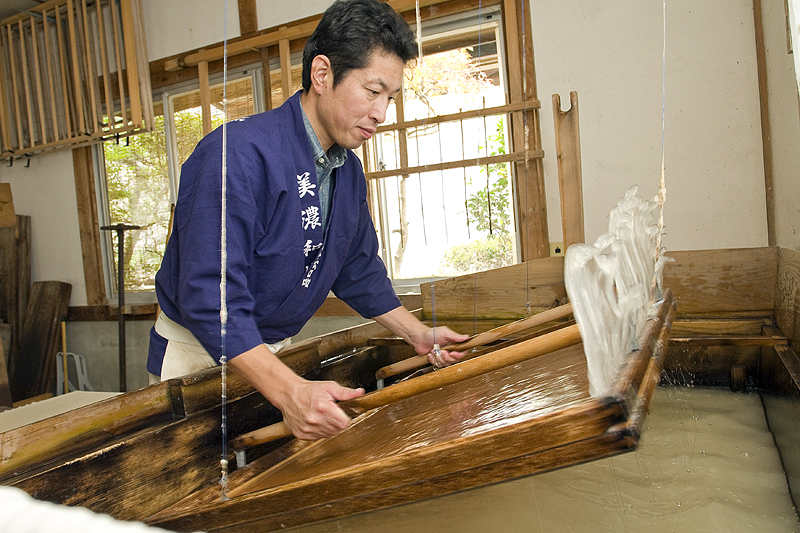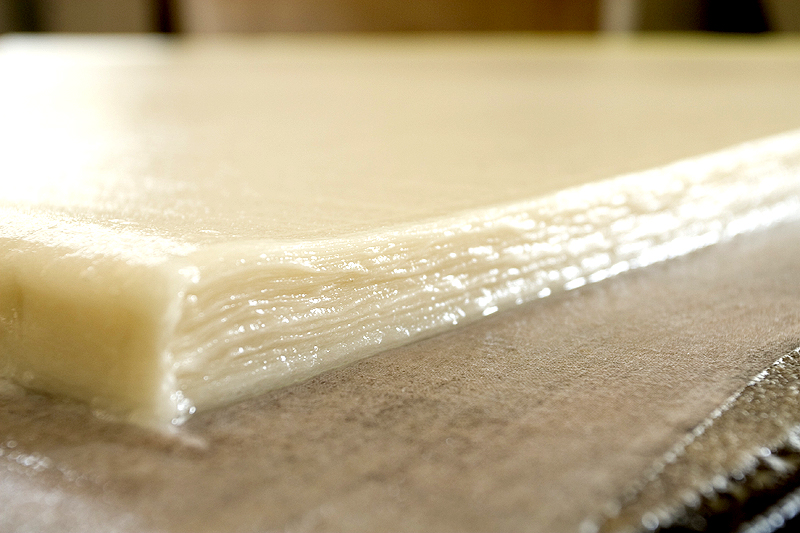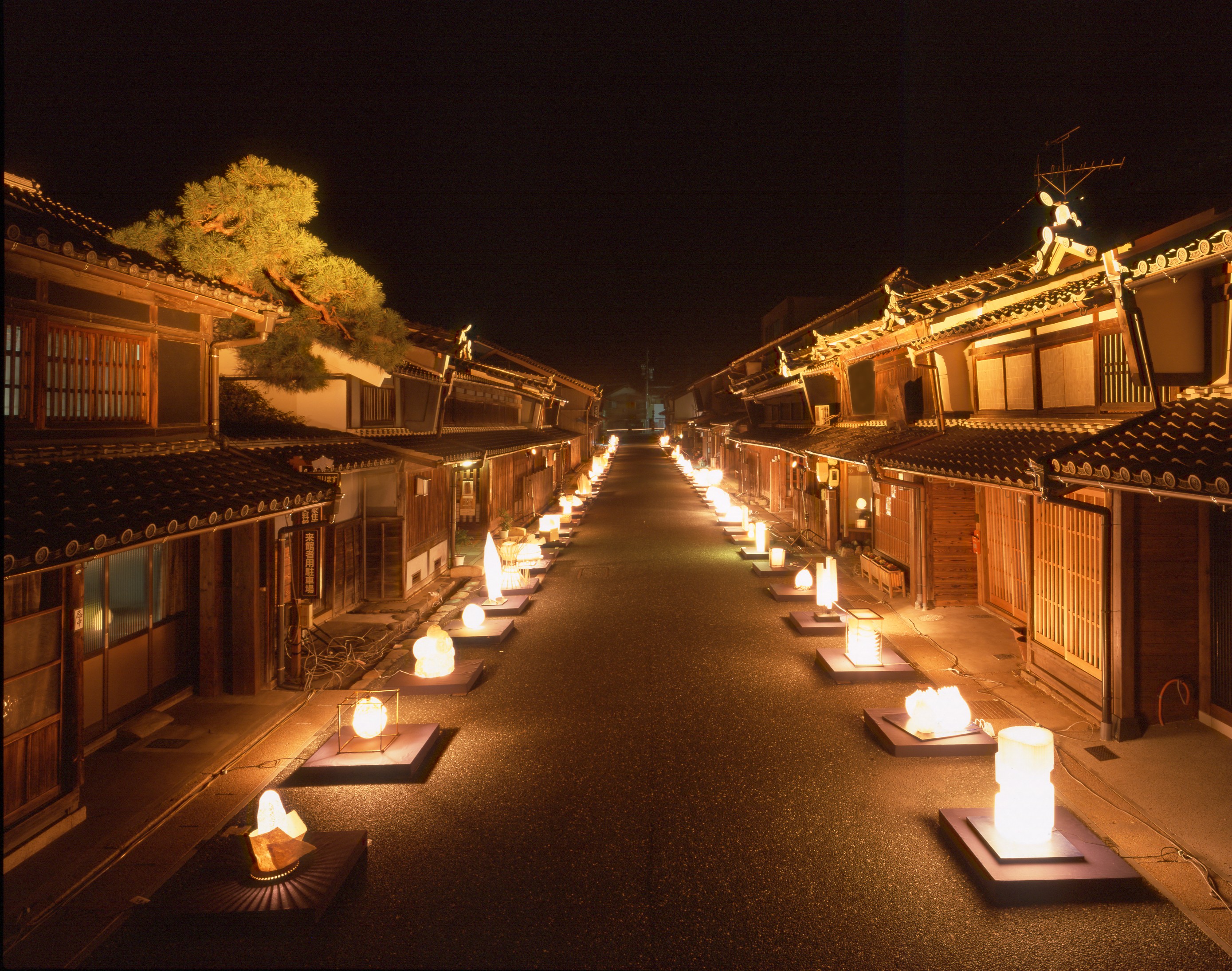The Appeal of Mino Washi
 Mino
washi (traditional Japanese paper from Mino City) has a proud tradition
of more than 1,300 years and has a fine fibre texture that is highly
regarded as beautiful and robust. Mino washi is made from the raw
material kozo (a native Japanese mulberry tree), and carefully
processed without the use of chemicals with skilled craftsmen using
traditional and time honoured processes, such as drying out in the sun. Mino
washi (traditional Japanese paper from Mino City) has a proud tradition
of more than 1,300 years and has a fine fibre texture that is highly
regarded as beautiful and robust. Mino washi is made from the raw
material kozo (a native Japanese mulberry tree), and carefully
processed without the use of chemicals with skilled craftsmen using
traditional and time honoured processes, such as drying out in the sun.
Satoshi
Hasegawa is an artisan manufacturing paper in Mino City in Gifu
Prefecture. The technique he uses to make washi, is a traditional
process native to the Mino region using domestic materials. His main
product is the high quality ‘Usu Mino Thin Paper’ which is widely used
to repair ancient cultural treasures such as manuscripts and texts in
art galleries and museums at home and abroad.
Upon
receiving a commission from the Ruthin Craft Centre where his skills
are highly valued, Mr Hasegawa has supplied the centre with 600 sheets
of Mino washi for the creation of a sculptural space at the exhibition,
Japanese Style: Sustaining Design. The exhibition will take place at
the Ruthin Craft Centre in Wales from 1 April to 24 June 2012 (www.japanseasonwales.com).
Mr
Hasegawa believes “Paper in itself may just be a material, but it is my
ongoing mission to continue and develop this work, and to connect the
tradition with the next generation”.
 This
special event at Daiwa Foundation Japan House was held on 2 April with
opening remarks from Mr Kazuyoshi Kano, Vice Mayor of Mino City and Mr
Akira Watanabe, Executive Director, Department of Industry Promotion,
Mino City. This was a successful event with a full to capacity
audience of 110, many of them connected to the field including
conservators from organisations such as the Bodleian Library at Oxford
University and the British Museum . This
special event at Daiwa Foundation Japan House was held on 2 April with
opening remarks from Mr Kazuyoshi Kano, Vice Mayor of Mino City and Mr
Akira Watanabe, Executive Director, Department of Industry Promotion,
Mino City. This was a successful event with a full to capacity
audience of 110, many of them connected to the field including
conservators from organisations such as the Bodleian Library at Oxford
University and the British Museum .
About the participants
Satoshi Hasegawa
Satoshi
Hasegawa was born in 1964. In 1991, he studied under the late foremost
craftsman of Mino washi, Kozo Furuta, who was dedicated to making
traditional papermaking for more than fifty years. Hasegawa established
his own studio in 1993. In 2003 he was designated by the Japanese
national body The Association for the Promotion of Traditional Craft
Industries as a “traditional craftsman”.
Zoë Howard
Zoë
Howard graduated from the University of Brighton in 2011 with a BA
(Hons) in Fine Art Printmaking. She developed a deep interest in
Japanese art and culture, in particular washi, after a study exchange
to Nagoya University of Arts, Japan in  2010.
Since then, she has completed an artist in residence at the Mino Paper
Art Village Project, exploring ideas of light and space, movement and
stillness through the manipulation of handmade Mino washi. She is
currently based in London and is continuing to develop work using
Japanese paper. 2010.
Since then, she has completed an artist in residence at the Mino Paper
Art Village Project, exploring ideas of light and space, movement and
stillness through the manipulation of handmade Mino washi. She is
currently based in London and is continuing to develop work using
Japanese paper.
Pictures: top; Satoshi Hasegawa, middle; Mino washi in production, bottom; Mino City "Hikari" Light Art exhibition
|



